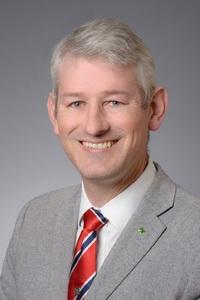Event
ODES-11
Optimizations are crucial to meet the performance, power and cost requirements that DSP and embedded systems have. The aim of the ODES workshop is to give the opportunity to researchers and practitioners working on this, to share their findings and get feedback.
Submitted by Anonymous on October 31st, 2013
Announcement
PROGRAM SOLICITATION NSF 14-505 - ALLIANCES FOR GRADUATE EDUCATION AND THE PROFESSORIATE (AGEP)
Alliances for Graduate Education and the Professoriate (AGEP)
PROGRAM SOLICITATION
NSF 14-505
REPLACES DOCUMENT(S):
Submitted by Anonymous on October 30th, 2013
Event
SCC Workshop #12
Software Certification Consortium - Workshop #12
October 28 - 29, 2013 - NRC Headquarters - Rockville, Maryland
Registration
Submitted by Paul Joannou on October 29th, 2013
Announcement
NRC/CSTB Study on Cyber-Physical Education
Please contact Virginia Talati (see below) you have any suggestions of people to involve in this National Research Council's Computer Science and Telecommunication Board study. Self-recommendations are welcome.
 Submitted by Jonathan Sprinkle on August 20th, 2013
Submitted by Jonathan Sprinkle on August 20th, 2013
Event
MDHPCL 2013
2nd International Workshop on Model-Driven Engineering for High Performance and Cloud computing
MODELS 2013 satellite event
------------------------------------------
Submitted by Anonymous on June 11th, 2013
Event
ICSSEA 2013
25th International Conference on SOFTWARE & SYSTEMS ENGINEERING and their APPLICATIONS
Submitted by Anonymous on June 11th, 2013
The Symposium on Applied Computing has been a primary gathering forum for applied computer scientists, computer engineers, software engineers, and application developers from around the world. SAC 2014 is sponsored by the ACM Special Interest Group on Applied Computing and is hosted by Seoul National University, Kyungpook National University, Soongsil University, and Dongguk University. The SRC Program is sponsored by Microsoft Research.
Submitted by Anonymous on June 11th, 2013
Event
ACES^MB 2013
6th International Workshop on Model Based Architecting and Construction of Embedded Systems
The design of embedded and cyber-physical systems with real-time and other critical constraints raises distinctive problems throughout the design process, from high-level system engineering down to low-level design.
Submitted by Anonymous on June 11th, 2013
Call for Applications - MODELING OUTSIDE THE BOX (MOTB) WORKSHOP
(co-located with MODELS'13 in Miami, Florida, USA, September 30, 2013)
http://cserg0.site.uottawa.ca/modelingoutsidethebox2013
WHAT IS IT?
===========
Through a series of creativity, lateral thinking, and brainstorming
activities, the Modeling Outside the Box (MOTB) workshop will ask
Submitted by Anonymous on June 11th, 2013
Event
2nd Workshop on AMT
To facilitate the processing and manipulation of models, a lot of research has gone into developing languages, standards, and tools to support model transformations. A quick search on the internet produces more than 30 different transformation languages that have been proposed in the literature or implemented in open-source or commercial tools. The growing adoption of these languages and the growing size and complexity of the model transformations developed require a better understanding of how all activities in the model transformation life cycle can be optimally supported.
Submitted by Anonymous on June 11th, 2013
Feedback
Feedback
If you experience a bug or would like to see an addition or change on the current page, feel free to leave us a message.